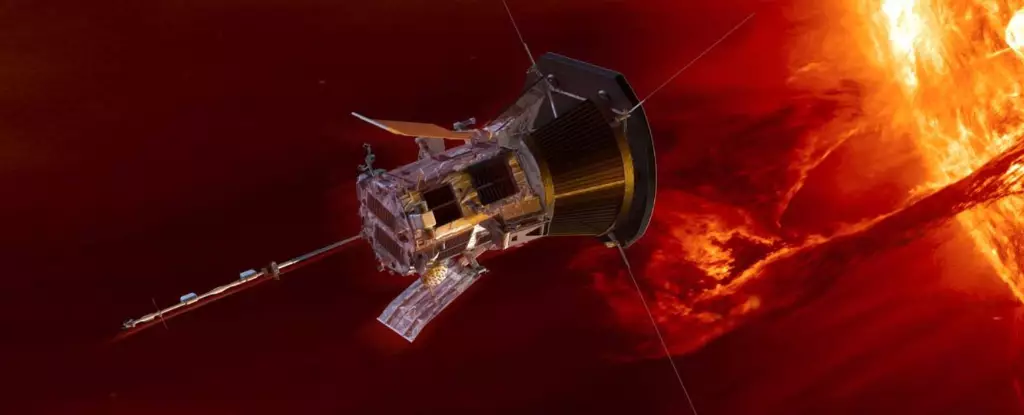Launched in August 2018, NASA’s Parker Solar Probe has made headlines by successfully traveling closer to the Sun than any spacecraft in history. This monumental achievement serves as a defining moment in space exploration, allowing scientists to gather data that probes the very fabric of our solar system’s closest star. With a mission extending over seven years, the Parker Solar Probe aims to unravel long-standing mysteries concerning solar phenomena and their effects on space weather that directly impact life on Earth.
Revolutionary Design for Extreme Conditions
As the Parker Solar Probe approached the Sun, it faced formidable challenges, including temperatures soaring above 1,700 degrees Fahrenheit (930 degrees Celsius). To combat such extreme conditions, the spacecraft is equipped with a groundbreaking heat shield developed to withstand intense heat while maintaining a stable environment for its internal instruments. This protective technology has allowed the instruments to remain at a comfortable temperature of around 85 degrees Fahrenheit (29 degrees Celsius), a remarkable feat given the surrounding environment the probe endures.
On December 24, 2024, the Parker Solar Probe executed a historic flyby, reaching an astonishing proximity of approximately 3.8 million miles (6.1 million kilometers) from the Sun’s core. For perspective, if the distance from Earth to the Sun were reduced to the length of a football field, the spacecraft would be just four yards from the end zone at its closest approach, known as perihelion. This milestone not only exemplifies NASA’s commitment to innovation but also serves as a showcase for advancing human understanding of our solar dynamics.
Even amid jubilation for the probe’s closest encounter with the Sun, mission scientists will experience a temporary communications blackout due to the probe’s proximity. They anticipate receiving confirmation of the flyby just days later, underscoring the challenges faced during such daring explorations. “We’re excited to hear back from the spacecraft when it swings back around the Sun,” expressed Nick Pinkine, mission operations manager at the Johns Hopkins Applied Physics Laboratory. This anticipation reflects the collaborative efforts of scientists eager to tap into a treasure trove of data that promises to transform our comprehension of solar mechanics.
The Parker Solar Probe’s primary scientific objectives are both ambitious and necessary for understanding solar phenomena. By traversing the Sun’s corona—its outer atmosphere—the probe seeks to decipher crucial questions, such as the origins of solar wind, the paradox of why the corona is hotter than the Sun’s surface, and the mechanisms behind coronal mass ejections. These phenomena have significant implications, not only for space missions but also for satellite operations and communication systems here on Earth.
The December 2024 flyby marks the first of three record-setting close passes scheduled for the Parker Solar Probe. Future encounters are anticipated on March 22 and June 19, 2025, each promising to bring invaluable insights and data from regions previously unexplored. Each flyby is expected to deepen our understanding and challenge existing theories regarding solar dynamics, heralding a new age of solar exploration.
The Parker Solar Probe stands as a testament to human ingenuity and determination. As it ventures into the solar system’s uncharted domains, it not only enhances our knowledge of the Sun but also strengthens our ability to predict and respond to myriad space weather events. NASA’s dedicated endeavor in launching the Parker Solar Probe has opened doors to understanding what lies at the heart of our solar system, cementing its legacy in the history of exploratory science. With each approach, the spacecraft inches us closer to unlocking the secrets held by our nearest star.


Leave a Reply